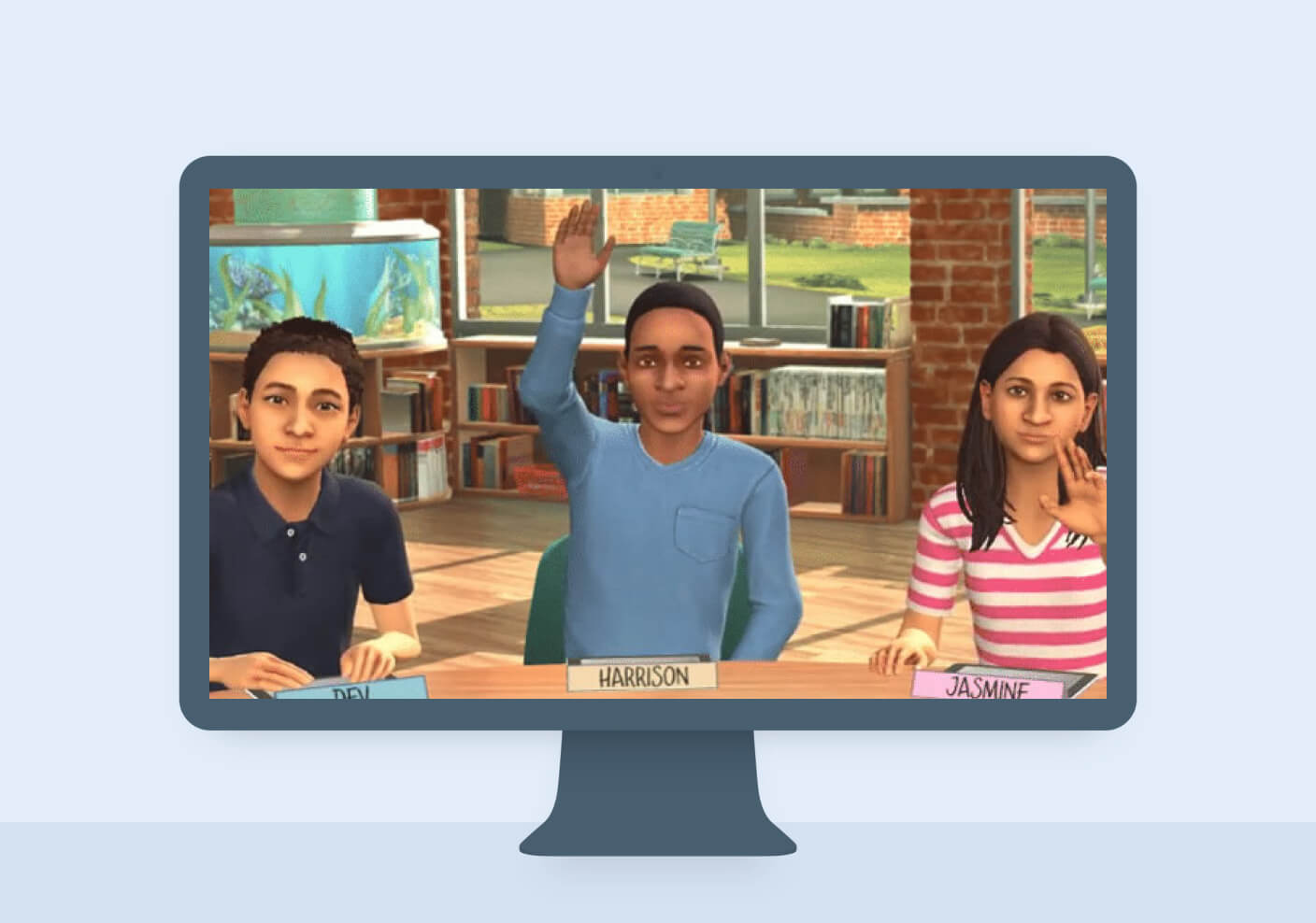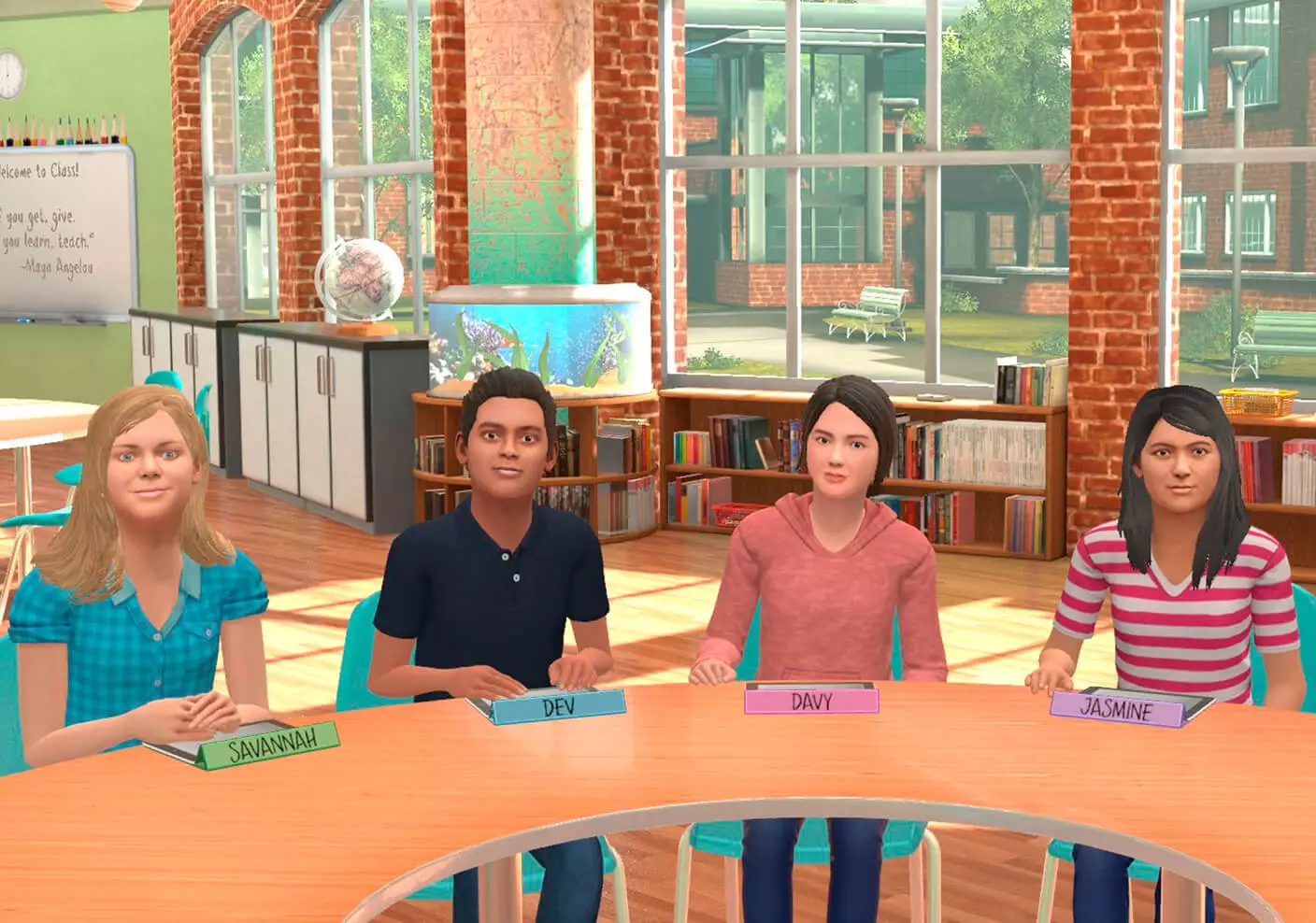This post was written by Tushar Thomas, an Associate Learning Partner at Mursion. If you would like to drop Tushar a note, reach out at [email protected].
Virtual reality training transports learners into a simulated world, which, though similar to reality, can seem alien and even comical to newcomers. In this week’s Education Roundtable discussion, Aminisha Ferdinand, a teacher and simulation specialist, presented the various orientation strategies that learners can use to prepare themselves for the novelty of the virtual reality environment. In one recording that was shown, a large group of teachers who underwent orientation together burst out laughing at the uncanny spectacle of Dev, a student avatar, raising his hand to politely ask a question just as a real student might. After just a few minutes of exposure to the simulation, however, the laughter fell away, and the teachers habituated themselves to the technology, attentively observing the comments and questions of the avatar students.
Although it can certainly be shocking at first, this unique combination of lifelike representation and digital unreality actually makes VR an irreplaceable tool for training. The dynamic and sometimes challenging remarks from the avatars, combined with their lifelike body language powered by artificial intelligence algorithms, draws learners into the VR world and engages their attention. The risks involved in the act of communication come to feel like real risks rather than pre-programmed outcomes. When Savannah, a student avatar, uses her phone to check her Instagram, learners authentically feel called upon to intervene, and they intuitively grasp the risk of alienating Savannah or the other student avatars with their intervention. At the same time, however, the unreality of the virtual classroom affords the learner some comforts. The avatars never remember learners’ mistakes, so learners need never be embarrassed before avatars. Learners can try the same scenario repeatedly until they arrive at a sense of mastery and confidence. Moreover, if a given scenario becomes too challenging or overwhelming, a learner can always pause midway to reflect and receive feedback.
As soon as learners have undergone orientation and become familiar with the VR environment, they can begin to rigorously train scenario-specific communications skills with repeated practice and feedback cycles. Often, these repeat-reflect learning cycles are built into virtual reality training programs. A standard one-hour session of training with Mursion, for example, entails a first experience with a scenario and one round of repetition with a pause to reflect in between.
Three Models in VR Training Design
According to preliminary research by Drs. Chris Dede and Rhonda Bondie from Harvard University, three general models describe the variations in VR training program design: (1) the linear model, the learner progresses through a sequence of orientation, simulation, and debrief without any repetition; (2) the spiral model, the learner completes a first round of simulation, receives feedback, then enters immediately into a new scenario that trains related skills (e.g., the first-round training scenario entails feedback communication with parents and the second round with the principal); (3) the cyclical model, the learner pauses midway through a scenario, perhaps around a critical moment or dialogue, to receive feedback and repeats the same scenario multiple times. While this list may not be exhaustive, it demonstrates the flexibility and adaptability of virtual reality training. Whether learners prefer to master one very specific skill or to develop familiarity with a breadth of related skills, the scenarios and the course design can be manipulated to achieve learners’ goals.
So, even if VR’s unreality can initially strike us as uncanny and uncomfortable, its versatility actually empowers us and affords us a space in which we can grow and encounter seemingly risky scenarios while still sheltered from real risks.
Subscribe for the latest Mursion articles and updates.
By clicking the sign up button above, you consent to allow Mursion to store and process the personal information submitted above to provide you the content requested. View our Terms and Conditions.




